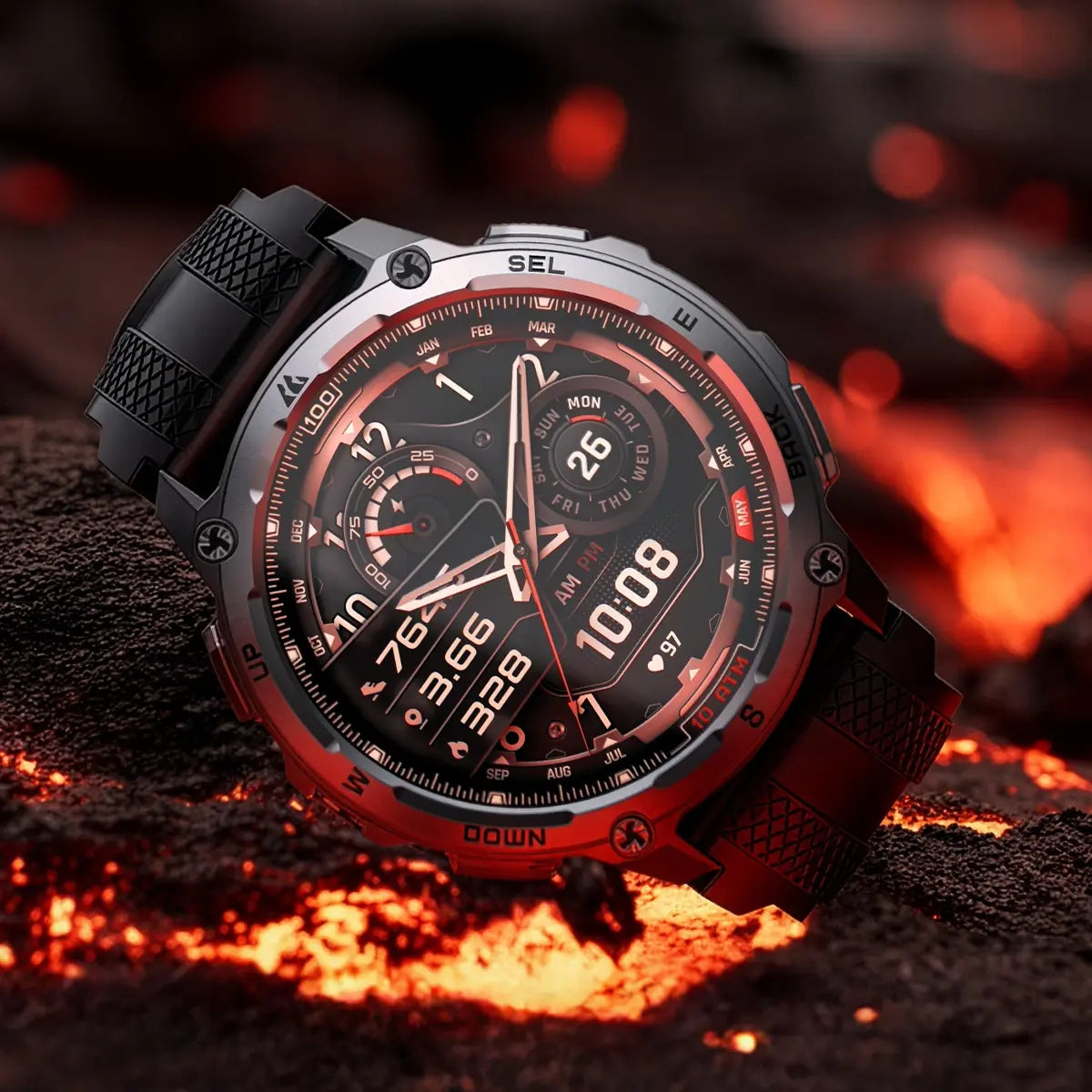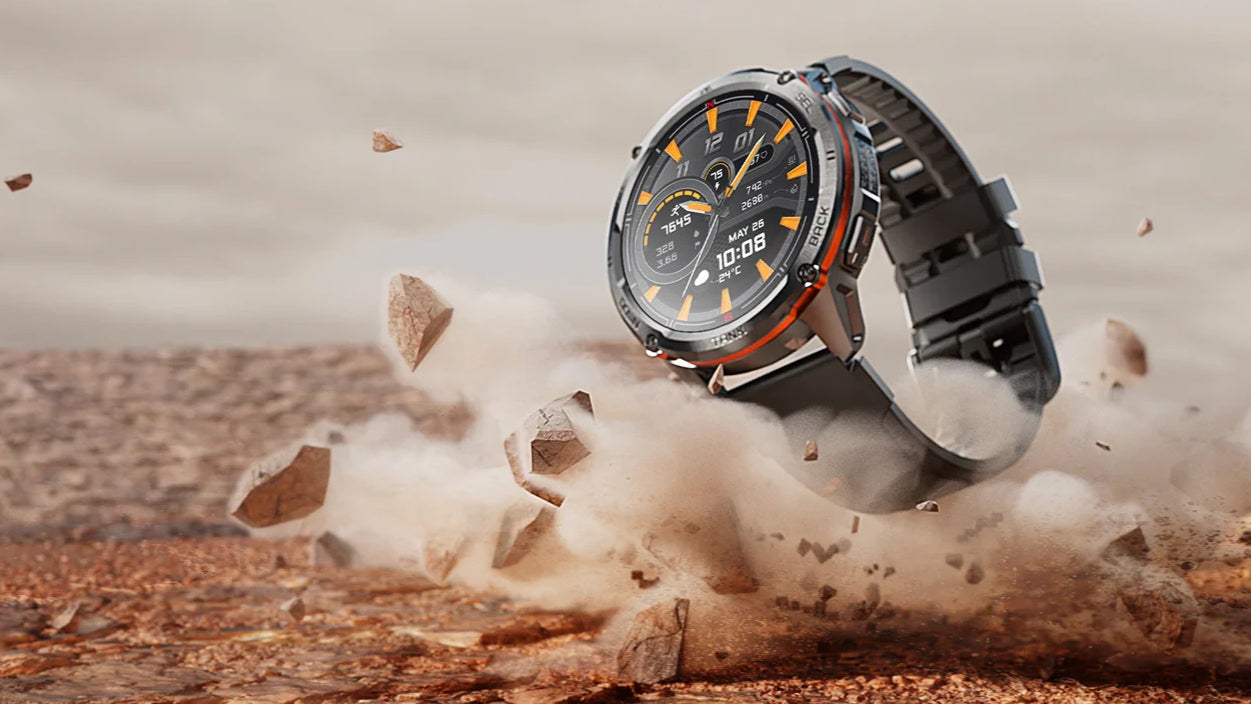When it comes to selecting a durable watch, the material of the case is one of the most important factors to consider. Stainless steel and titanium are two of the most widely used materials for durable watches.
Both materials offer excellent durability, but they each have unique properties that make them better suited for different needs. In this article, we'll take a closer look at the differences between these two materials and help you decide which one is the best fit for your needs.
What Defines a Durable Watch?
A durable watch is designed to withstand the challenges of everyday wear and extreme conditions. It should be resistant to scratches, dents, and corrosion, while also maintaining its functionality and appearance.
The case material plays a huge role in determining how well a watch holds up against physical damage, environmental exposure, and long-term wear.
When we talk about durable watches, we’re looking at watches that can endure wear and tear over time. This includes resistance to impacts, water exposure, corrosion, and scratches. The material used for the watch case directly affects these properties.
Why Material Choice Matters in a Durable Watch

The material used for a durable watch case significantly impacts its performance. Both stainless steel and titanium are strong, corrosion-resistant, and well-suited for daily use, but they excel in different areas.
- Stainless steel is often chosen for its balance of strength, durability, and cost-effectiveness. It is ideal for most everyday environments and offers great resistance to rust and corrosion.
- Titanium, on the other hand, stands out due to its light weight and superior corrosion resistance, making it ideal for extreme environments such as saltwater or high-altitude conditions.
Stainless Steel in a Durable Watch: Pros & Cons
Stainless steel is a popular material used in many durable watches. Here’s why it is commonly chosen:
Pros:
- Strength: Stainless steel is incredibly tough, capable of withstanding bumps, knocks, and impacts without easily breaking or cracking. It is one of the strongest materials used in watchmaking.
- Corrosion Resistance: Stainless steel naturally resists rust and corrosion, which makes it perfect for environments with high humidity or exposure to moisture.
- Affordability: Compared to titanium, stainless steel is more affordable, making it an attractive choice for budget-conscious buyers who want a durable material without paying a premium.
Cons:
- Weight: Stainless steel is relatively heavy, and for those who prefer lightweight watches, it might feel bulky, especially when worn for long periods.
- Scratches: While stainless steel is strong, it can still be prone to scratches. Over time, the surface may show signs of wear, especially when exposed to rough environments. Although scratches can be polished, they may still be noticeable.
Titanium in a Durable Watch: Pros & Cons
Titanium is another material widely used in durable watches, particularly in situations where weight is a concern. Here’s how titanium compares to stainless steel:
Pros:
- Lightweight: Titanium is approximately 40% lighter than stainless steel, making it incredibly comfortable to wear for long periods without feeling heavy on the wrist.
- Superior Corrosion Resistance: Titanium offers exceptional resistance to corrosion, even in harsh environments like saltwater. It does not tarnish or rust, making it perfect for marine and diving activities.
- Strength: Titanium is just as strong as stainless steel but is much more flexible. This combination of strength and flexibility makes it a great material for watches that need to handle impact without cracking.
Cons:
- Cost: Titanium is more expensive than stainless steel, which can make watches made from titanium pricier.
- Scratch Visibility: Although titanium is strong, it is more prone to visible scratches than stainless steel. Once scratched, the marks are harder to polish out, and the surface can appear worn more easily.
Direct Comparison: Stainless Steel vs Titanium for a Durable Watch
Here’s a direct comparison of stainless steel and titanium based on key factors that matter most when selecting a durable watch:
| Factor | Stainless Steel | Titanium |
|---|---|---|
| Weight | Heavier, can be uncomfortable for long wear | Lighter, more comfortable for extended use |
| Corrosion Resistance | Excellent, but not as good as titanium | Superior, ideal for saltwater and extreme environments |
| Scratch Resistance | Prone to scratches, can be polished | More prone to visible scratches, hard to polish |
| Strength | Very strong, withstands impacts well | Extremely strong, but more flexible |
| Cost | More affordable | More expensive |
How to Choose the Right Material for Your Durable Watch
When choosing between stainless steel and titanium, consider the following factors:
- Environment: If you plan on wearing your watch in environments exposed to saltwater, humidity, or extreme temperatures, titanium’s superior corrosion resistance may make it the better choice. However, if you only need a watch for regular day-to-day use, stainless steel will provide solid performance.
- Comfort: If comfort is a priority, titanium’s lightweight nature makes it ideal for those who wear their watch for long periods. Stainless steel, being heavier, may not be as comfortable, especially if you are wearing it all day.
- Budget: If you’re on a tighter budget, stainless steel is a more affordable option that still offers great durability. Titanium watches are more expensive, but they may be worth the investment if you need a lighter, more corrosion-resistant watch for demanding environments.
Maintenance Tips to Maximise the Lifespan of Your Durable Watch
To maximize the lifespan of your durable watch, proper care is essential, regardless of the material used. Here are some maintenance tips:
- Cleaning: Clean your watch regularly to remove dirt, salt, and sweat. Use a soft cloth and a mild soap solution to avoid scratching the surface.
- Check Seals: Make sure the seals around the watch are intact to maintain its water resistance. This is especially important for watches exposed to water frequently.
- Avoid Excessive Impact: While both stainless steel and titanium are durable, avoiding heavy impacts or extreme force will help prevent damage over time.
Conclusion
Both stainless steel and titanium offer excellent durability, but they each cater to different needs.
Stainless steel is a solid choice for everyday wear, offering strength, affordability, and resistance to corrosion.
Titanium, on the other hand, is lighter, more corrosion-resistant, and ideal for extreme environments, making it the better option for outdoor activities, diving, or those looking for a lightweight watch.
Ultimately, your choice should depend on your specific needs. Consider the environment you’ll be using the watch in, how long you plan to wear it each day, and your budget.
FAQs
Does titanium scratch less than stainless steel?
Titanium is generally more scratch-resistant than stainless steel, but it can still develop visible scratches. However, titanium scratches are more difficult to polish out compared to stainless steel.
Is a stainless steel watch less durable in saltwater than titanium?
Yes, titanium is more resistant to corrosion, especially in saltwater, making it better for marine and diving activities.
Can a durable watch made of stainless steel last as long as one made of titanium?
Both materials are durable, but titanium tends to last longer in harsh environments due to its superior corrosion resistance.
















Deja un comentario
Este sitio está protegido por hCaptcha y se aplican la Política de privacidad de hCaptcha y los Términos del servicio.